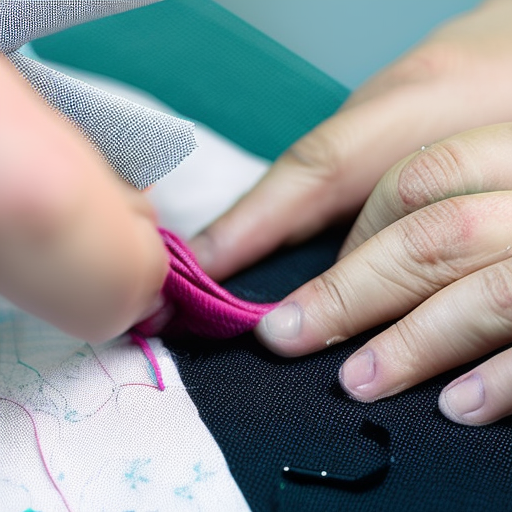Mastering essential sewing techniques by hand
The Art of Hand Sewing
Hand sewing is an ancient craft that has stood the test of time. While modern sewing machines offer convenience and efficiency, there is a unique charm and artistry associated with hand sewing techniques. Whether you’re a beginner or an experienced sewer, mastering these hand sewing techniques will open up a world of possibilities in your projects.
Needle Selection
The first step to successful hand sewing is choosing the right needle. Consider the fabric you’re working with, the thread thickness, and the size of the desired stitch. There are various needle types, such as sharps, betweens, and embroidery needles, each serving different purposes. Experiment with different needle selections to find what works best for your projects.
Threading and Knotting
Threading a needle properly is crucial for smooth sewing. Cut a clean, angled end on your thread and moisten it if necessary to make threading easier. Once threaded, create a small knot at the end of the thread to prevent it from slipping through the fabric. Practice these steps until they become second nature.
Basting Stitch
Basting stitches are temporary long stitches used to hold fabric pieces together before permanent sewing. This technique allows for adjustments and prevents fabric from shifting during the final stitching. Use a contrasting thread color and work with even, straight stitches to make it easier to remove later.
Backstitch
The backstitch is a strong hand sewing stitch used for securing seams or creating decorative hand embroidery. Start by sewing one regular stitch forward, then bring the needle back through the end of the previous stitch. Repeat this process for a secure and neat line of stitches. Backstitching is essential for reinforcing seams on garments and can add beautiful embellishments.
Slip Stitch
A slip stitch is an invisible stitch used for closing openings and creating seamless finishes. This technique is commonly employed when hemming garments, attaching linings, or finishing pillows. The key is to catch only a few threads of the fabric with each stitch, ensuring minimal visibility from the right side.
French Knot
The French knot is a decorative hand embroidery stitch that adds texture and dimension to your sewing projects. It’s perfect for creating small dots, eyes, or intricate designs. To make a French knot, bring the needle through the fabric from the back and wrap the thread around the needle two or three times. Insert the needle near the same spot it emerged, forming a knot. Gently pull the thread taut, holding the wraps in place. Finally, bring the needle back through the fabric a short distance away, securing the knot.
Finishing Touches
When you’ve completed your hand sewing, it’s essential to give your project a professional finish. Trim loose threads, press the seams gently, and give your creation a final inspection for any required touch-ups. These small details will elevate the overall quality and appearance of your work.




